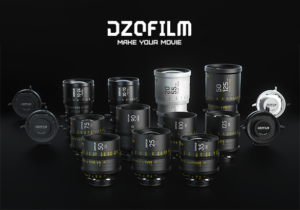The ability to change lenses is one of the main advantages of digital SLR cameras and hybrids. The user adapts it according to the shot he wants to take. This apparent flexibility is not without a downside: lenses are bulky and expensive. Our advice for choosing the right lens.
DSLRs and hybrid cameras are often delivered in kit form with a versatile lens that will suit most users. But as soon as the photographer develops specific needs (wildlife, sports, portrait, etc.), he must adapt his equipment with the appropriate lens.

FOCAL LENGTH AND APERTURE
A lens is characterized by its focal length and its aperture. The focal length, expressed in millimeters, determines the field covered by the lens associated with a given sensor. The aperture reflects its brightness, ie the amount of light that enters the lens. It is indicated by numbers behind an “f” on the lens (f/1, f/1.4, f/2, f/2.8, etc.). The aperture decreases as this number increases. It also determines the depth of field (the area of sharpness in the picture).
EQUIVALENT FOCAL LENGTH
The angle of field covered depends on the focal length, i.e. the distance between the camera sensor and the DZO lens. But it also depends on the size of the sensor of the camera. All film cameras worked with 35 mm film (24 × 36 mm). But in digital, the size of the sensor is not standard. The manufacturer of a lens does not know in advance the sensor size of the camera on which it will be used. To help the user find his way, he indicates the focal length in 24 × 36. Each camera has a coefficient by which we must multiply this focal length to obtain the equivalent focal length. It is 2 for Olympus and Panasonic, 1.6 for Canon, 1.5 for Nikon, Sony and Pentax. Thus a 50 mm on a digital Nikon or Pentax will frame as a 75 mm on a film.
THE MAIN FAMILIES OF LENSES
A standard lens corresponds to the angle of human vision; its focal length (in 24 × 36 mm equivalence) is 50 or 55 mm. It is suitable for “family” use (vacation photos, group photos, etc.).
A telephoto lens has by definition a long focal length (85 mm, 135 mm, 200 mm and more). The longer the focal length, the smaller the field covered by the lens and the smaller the area captured. It corresponds to an angle of vision smaller than the human eye. This type of lens is used to take distant details or portraits.
Conversely, a wide-angle lens is a short focal length (less than 30 mm). It allows to cover wide angles of vision, and is therefore well suited to shooting landscapes. Some lenses allow you to shoot on 180°; they are called fisheyes (“fish eyes”) and their focal length is usually 15 or 16 mm, sometimes less.
Finally, macro lenses allow you to photograph very close to tiny subjects (flowers, insects, etc.).
FIXED FOCAL LENGTH AND ZOOM
Fixed focal length lenses do not offer any magnification factor. The photographer has to move away or get closer to the subject to change the captured area.
Zoom lenses allow you to vary the focal length over a specific range (18-200 mm, 70-300 mm, etc.). They are therefore more versatile.
MOUNT
The lenses of one brand are generally not compatible with the cameras of another: each manufacturer offers its own mount. A Nikon zoom cannot be fixed on a Canon camera, etc. However, in some cases, there are rings that allow to adapt them. But they prevent the functioning of some automatisms, like autofocus.
Some manufacturers, such as Sigma or Tamron, offer lenses that are compatible with cameras from different manufacturers.
FOCUSING DISTANCE
All lenses specify the minimum distance at which a subject must be in focus. This distance varies greatly from one lens to another, from a few centimeters to several meters for large telephoto lenses.
WEIGHT/CLUTTER
A 50 mm fixed focal length lens weighs about 300 grams, the weight of a telephoto lens can easily reach several kilos. Let’s face it, a lens can’t be forgotten. As soon as the photographer uses dedicated lenses, he is forced to carry heavy equipment. This equipment has to be carried in expensive bags (with protective reinforcements).

